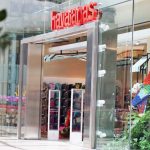Under Armour’s fourth-quarter earnings and sales topped Wall Street estimates as demand continues to improve, led by North America. However, officials warned on an analyst call that supply chain headwinds tied to the pandemic, including heightened freight costs and stalled deliveries, would weigh on further progress for the next several quarters.
Shares of Under Armour were trading down $2..07, or 10.2 percent, to $17.92 in early-afternoon trading Friday.
Under Armour provided an updated outlook for its transitional quarter ended March 31 that placed sales above prior guidance but earnings guidance below analyst targets.
The guidance for the three months ended March 31 included:
- Revenue is expected to increase at a mid-single-digit rate compared to the previous expectation from the company calling for a low-single-digit rate increase. The expectation includes approximately 10 percentage points of headwinds related to reductions in its spring-summer 2022 order book due to supply constraints.
- Gross margin is expected to be down 200 basis points compared to the prior-year period’s adjusted gross margin, including 240 basis points of negative impact due to higher freight expenses resulting from ongoing supply chain challenges in addition to unfavorable sales mix, partially offset by pricing benefits.
- Operating income is expected to reach approximately $30 million to $35 million, down about 70 percent from the adjusted operating income of $114 million in the year-ago period.
- EPS is expected to be 2 cents to 3 cents against 16 cents in adjusted earnings reported a year ago. Wall Street’s consensus estimate had been 14 cents with estimates ranging from 2 cents to 33 cents.
The company is changing its fiscal year-end from December 31 to March 31 because visibility from an investor standpoint is expected to improve with Under Armour’s two largest quarters in the middle of the new fiscal year. Given the transition to a new fiscal year-end and the fact that the majority of fall/winter orders for its wholesale business are not set. Under Armour did not provide its initial fiscal 2023 financial outlook.
On the call, David Bergman, CFO, said the COVID-19-related supply chain pressures, including longer than usual transit times, port congestion and associated freight and logistics costs, are expected to continue at least through the first half of fiscal 2023 before easing in the back half.
“It is definitely not a demanding challenge as we think about this transition quarter or even going into the beginning of fiscal 23,” said Bergman. “It is a supply challenge with the COVID impacts, and so that’s a position that we’re excited to be in and really challenge our supply chain team to be able to continue to deliver for us.”
The supply chain challenges come as demand for Under Armour products continues to improve, helping sales and gross margins in the fourth quarter to exceed internal plans. The quarter’s results were helped by a standout performance in North America, which is estimated to have driven 75 percent of the better-than-expected overall performance.
Under Armour officials said its performance reflected progress on restructuring efforts with the quarter benefiting from healthier full-price sales across wholesale and direct-to-consumer, significantly reduced sales to the off-price channel, disciplined inventory management and past investments in supply chain efficiencies.
On the call, Under Armour President and CEO Patrik Frisk highlighted the company’s progress made over the year that included increased marketing investments to capitalize on demand. He said, “Throughout 2021, we worked methodically to expand our brand’s awareness and engagement, ensuring we showed up more consistently, louder and with a sharper point of view about the distinct role we play in an athlete’s journey to compete. We underscored our commitment to performance by delivering some of the most innovative products that we’ve ever produced. We forged deeper and more productive relationships with our key wholesale partners. We saw significant progress in our largest long-term growth drivers: our international, direct consumer, women’s and footwear businesses. And we’re stronger financially than we’ve ever been.”
Fourth-Quarter Sales Climb 8.9 Percent
In the fourth quarter, revenue grew 8.9 percent to $1.5 billion (up 8 percent currency-neutral) to $1.53 billion, topping Wall Street’s consensus estimate of $1.47 billion.
Bergman noted that Under Armour had previously cited several headwinds expected for the fourth quarter, including lower sales of sports masks; reduced sales to the off-price channel; the absence of MyFitnessPal, which was sold at the end of 2020; and proactive supply constraints to better align inventory with demand.
The CFO said, “Versus our previous expectation, our revenue over-deliver was primarily due to higher demand across our full-price wholesale and direct-to-consumer businesses, particularly in North America, coupled with better than expected supply chain execution during this challenging environment.”
By channel, Wholesale revenue in the quarter increased 16 percent to $768 million, driven by strong performance in its full-price business, partially offset by lower year-over-year sales to the off-price channel.
Direct-to-consumer (DTC) revenue increased 10 percent to $720 million, driven by 14 percent growth in its owned and operated stores and 4 percent growth in e-commerce. E-commerce, which represented 42 percent of the total DTC revenues during the quarter, was up more than 30 percent on a two-year basis.
Licensing revenue was down 33 percent to $37 million, driven primarily by the recognition timing of minimum royalty payments.
By product type, Apparel revenue was up 18 percent to $1.1 billion with strength in training and outdoor. Footwear expanded 17 percent to $283 million, driven primarily by running and training. Accessories decreased 27 percent to $107 million due to planned lower sales of sports masks.
By region, North American revenue increased 15 percent to $1.1 billion, driven by growth in full-price wholesale and DTC businesses. Compared to 2019, North American revenue was up 8 percent, driven by higher-quality revenue than two years ago. Bergman described North American results as “excellent barometers to improving brand strength and consumer demand in our largest region.”
International revenue increased 3 percent (up 2 percent currency-neutral) to $461 million.
EMEA revenue increased 24 percent (23 percent currency-neutral) to $200.2 million, driven primarily by strengthening wholesale. EMEA sales were up 11 percent against the 2019 quarter.
In the Asia Pacific regain, sales were down 6 percent (7 percent currency-neutral), to $217.2 million, driven by softer demand in its wholesale business which more than offset DTC growth. Compared to 2019, Asia Pacific revenue was up 19 percent. Said Frisk, “The recent market trends in China are impacting our business. However, our focus in China remains the same: staying premium; continuing to invest in digital innovation, including working to deliver a much-improved end-to-end consumer engagement platform; and ensuring the store expansions are done at an appropriate pace amid dynamic market conditions.”
Latin America revenues declined 22 percent (23 percent currency-neutral) to $44.0 million. The decline was due to the shift of certain countries to distributors in a move that is now completed. Versus the fourth quarter of 2019, Latin America was down 20 percent.
Gross Margins Expand 130 Basis Points
Gross margins in the fourth quarter increased 130 basis points to 50.7 percent compared to the prior year. The expansion was driven by 350 basis points of pricing improvements due primarily to lower promotional activity within its DTC business, favorable pricing related to sales to the off-price channel, and lower promotions and markdowns across our wholesale business; and 90 basis points of benefit related to lower restructuring charges.
These improvements were partially offset by 190 basis points of supply chain impacts driven by higher freight costs, which meaningfully offset product cost benefits during the quarter. Other factors weighing on margins included the absence of My Fitness Pal and unfavorable product mix related primarily to lower sports mask sales.
Bergman said the better-than-expected margin was primarily due to favorable pricing developments from lower than planned promotional activity within its DTC business, more favorable pricing-related sales to the off-price channel, and lower than planned promotions and markdowns within its wholesale business.
SG&A expenses increased 15 percent to $676 million, primarily due to increased marketing investments, incentive compensation, and non-salaried workforce wages. As a percent of sales, SG&A expense increased to 44.2 percent from 41.7 percent.
Restructuring charges were $14 million in the latest quarter against $52 million a year ago. Under Armour said it now expects charges related to its 2020 restructuring plan between $525-to-$550 million ($525-to-$575 million previously) and has recognized $514 million to date. Remaining charges related to the plan are expected to be recognized by the end of the first quarter of FY23.
Operating income in the quarter was $86 million, up from $56 million. On an adjusted basis, operating income was $100 million, down 16.6 percent from $120 million.
Net income was $110 million, 23 cents a share, down from $184.5 million, or 40 cents, a year ago. Adjusted net income was $67 million, or 14 cents, up 21.8 percent from adjusted income was $55 million, or 12 cents, a year ago. Adjusted results of 14 cents topped Wall Street’s consensus estimate of 7 cents.
Inventories at the quarter’s end were down 9 percent, driven by continued improvements in its operating model and inbound shipping delays due to COVID-related supply chain pressures.
Premium Positioning Focus Drives 2021 Outperformance
Highlighting progress for the year, Frisk noted that Under Armour’s sales in 2021 grew 27 percent to $5.7 billion, a record, and was up 8 percent versus 2019. He said gains were driven by “several strategies that have lifted the quality and composition of our sales compared to a few years ago.”
Wholesale grew 36 percent in 2021 to $3.2 billion and was up 3 percent on a two-year basis. The wholesale gains came despite moves to reduce sales to the off-price channel and exit approximately 2,500 “undifferentiated” retail stores in North America. Frisk said the store exit plan has been completed.
DTC sales in the year were up 26 percent to $2.3 billion in 2021 and ahead 29 percent against 2019 “with strong momentum in our owned and operated stores and our e-commerce business,” said Frisk. E-commerce last year was up 4 percent on top of a 40 percent gain in 2020. Frisk said this gives Under Armour confidence that its online segment is “well-positioned following a prolonged period of elevated promotional activities.”
By product category, apparel revenue increased 33 percent to $3.8 billion. Apparel platforms that drove growth included Rush, Iso-Chill, Rival Fleece, Crossback, Infinity, Unstoppable and Meridian. Footwear revenue jumped 35 percent in 2021 to $1.3 billion. HOVR Sonic, HOVR Infinite, UA Flow Velociti Wind, UA Charged Pursuit, Aurora, Curry and Project Rock were footwear product highlights.
Frisk said “The Only Way Is Through” marketing campaign continued to resonate and the brand’s decision to make incremental marketing investments last year is expected to “fuel even stronger brand momentum in the years ahead.”
From a regional perspective, North America’s sales in 2021 grew 29 percent year over year to $3.2 billion and were up 4 percent against 2019. In North America, Under Armour is focused on “creating more compelling in-store experiences and delivering best in class service across our fleet” as well as building on e-commerce momentum seen over the last two years.
Frisk said that with the exit of undifferentiated retailers, Under Armour is encouraged by productivity KPIs (Key Performance Indicators) being seen across the North American channel. The CEO stated, “The more premium position, driven by outstanding inventory management and promotional discipline, is translating nicely to additional shelf space opportunities with our largest strategic partners, higher AURs (average unit retails), and significantly better terms.”
Finally, Frisk said the North American business is benefiting by “more smartly marketing,” as witnessed by improved brand affinity scores around awareness, consideration and conversion.
“Gaining better productivity from how and where we spend has always been the goal,” Frisk said. “By delivering higher-quality traffic through strategic paid media and targeted e-mail activations, our ability to connect more meaningfully across key moments and multiple platforms has never been greater.”
Gross margin in the year was up 210 basis points year over year to a record 50.3 percent and up 340 basis points versus 2019 as benefits from pricing and a more favorable channel mix offset supply chain headwinds and the sale of MyFitnessPal. Frisk further noted that operating income and net earnings were also records.
From a balance sheet perspective, inventories at the year’s close in dollar value have been brought down to levels only slightly higher than those reached in 2015, when Under Armour was a $4 billion annual business. Under Armour further ended the year with a record $1.7 billion in cash.
“Having operated for nearly two years amid a global pandemic, I am proud of the progress we’ve made, the resilience we’ve shown and the potential we have to do even better in the future,” said Frisk. “By staying focused on our key strategies, we are competing and executing at progressively higher levels, helping us unlock value and returns for our shareholders.”
Photo courtesy Under Armour
















